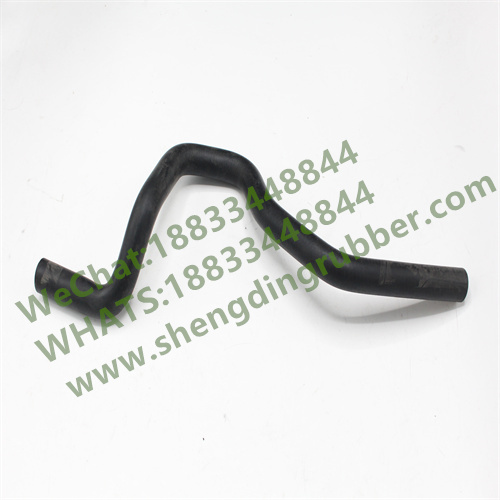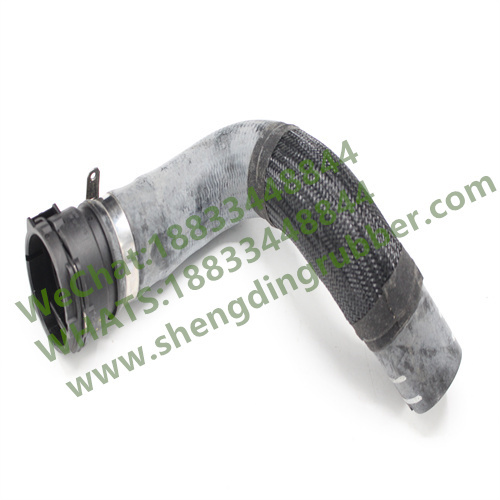Step-by-Step Guide to Installing a New Radiator Hose in Your Dodge, Jeep, or Chrysler
Release Time:
Apr 09,2025
Step-by-Step Guide to Installing a New Radiator Hose in Your Dodge, Jeep, or Chrysler Maintaining your vehicle's cooling system is crucial for optimal performance, especially in models like Dodge, Jeep, and Chrysler. One essential component in this system is the radiator hose. If you notice signs of wear, leaks, or degradation, it’s time to replace it. In this guide, we will walk you through the e
Step-by-Step Guide to Installing a New Radiator Hose in Your Dodge, Jeep, or Chrysler
Maintaining your vehicle's cooling system is crucial for optimal performance, especially in models like Dodge, Jeep, and Chrysler. One essential component in this system is the radiator hose. If you notice signs of wear, leaks, or degradation, it’s time to replace it. In this guide, we will walk you through the entire process of installing a new radiator hose, ensuring your vehicle stays cool under pressure.
Table of Contents
- Understanding the Radiator Hose
- Signs of a Failing Radiator Hose
- Tools and Materials Needed for the Installation
- Preparing for the Installation
- Step-by-Step Installation Process
- Testing Your Installation
- Conclusion
- FAQs
Understanding the Radiator Hose
The radiator hose is a vital component of your vehicle's cooling system. It transports coolant from the engine to the radiator, helping to regulate the engine temperature. Typically made from rubber or silicone, the hoses are designed to withstand high temperatures and pressures. However, over time, they can become brittle or develop leaks, leading to overheating issues.
Signs of a Failing Radiator Hose
Identifying a failing radiator hose early can save you from costly repairs. Here are common signs to watch for:
1. Visible Cracks or Bulges
Inspect the hose for any visible cracks, bulges, or soft spots. These are clear indicators of wear and should be addressed immediately.
2. Coolant Leaks
If you notice puddles of coolant under your vehicle or a sweet smell while driving, the radiator hose may be leaking. This is a serious issue that requires prompt attention.
3. Overheating Engine
When the radiator hose fails to transport coolant effectively, your engine may overheat. Keep an eye on the temperature gauge to prevent engine damage.
4. High-Pitched Hissing Sounds
A hissing noise could indicate that steam is escaping through a leak in your radiator hose. If you hear this sound, it’s time to take action.
Tools and Materials Needed for the Installation
Before you begin the installation process, gather the necessary tools and materials:
- Replacement radiator hose (specific to your Dodge, Jeep, or Chrysler model)
- Socket set
- Wrench set
- Hose clamp pliers
- Coolant
- Funnel
- Clean rags
- Safety glasses and gloves
Preparing for the Installation
Before diving into the installation, it’s essential to prepare your workspace and vehicle:
1. Safety First
Ensure your vehicle is parked on a level surface and the engine is cool. Put on safety glasses and gloves to protect yourself during the process.
2. Gather Tools and Parts
Have all your tools and the new radiator hose within arm’s reach. This will streamline the process and minimize interruptions.
3. Relieve Engine Pressure
Before removing the hose, relieve any built-up pressure in the cooling system by slowly removing the radiator cap. Use a rag to avoid burns from hot coolant.
Step-by-Step Installation Process
Removing the Old Hose
Now that you’re prepared, it’s time to remove the old radiator hose:
- Locate the Radiator Hose: Identify the hose you need to replace. It connects the engine to the radiator, typically found on the front of the engine compartment.
- Loosen the Hose Clamps: Use hose clamp pliers or a flathead screwdriver to loosen the clamps securing the old hose. Slide them back along the hose.
- Remove the Hose: Carefully twist and pull the hose away from the engine and radiator. Be cautious, as some coolant may spill out.
- Clean the Connection Points: Use a clean rag to wipe down the connection points on the radiator and engine to remove any debris or old coolant residue.
Installing the New Hose
With the old hose removed, it’s time to install the new one:
- Align the New Hose: Place the new radiator hose onto the connection points, ensuring it is positioned correctly.
- Secure the Hose Clamps: Slide the hose clamps back into place and tighten them securely to prevent leaks.
- Refill Coolant: Using a funnel, refill the radiator with coolant to the appropriate level. Be sure to check your owner’s manual for specifications.
- Replace the Radiator Cap: Once the coolant is filled, securely replace the radiator cap.
Testing Your Installation
After completing the installation, it’s essential to test your work:
1. Start the Engine
Start your vehicle and let it idle for a few minutes. Keep an eye on the temperature gauge to ensure the engine is not overheating.
2. Check for Leaks
Inspect the connection points for any signs of leaks. If you notice any coolant dripping, tighten the clamps further.
3. Take a Test Drive
Finally, take your vehicle for a short drive. Monitor the temperature gauge and check for any unusual sounds or smells.
Conclusion
Replacing a failed radiator hose in your Dodge, Jeep, or Chrysler is a manageable task that can save you time and money in the long run. By following this step-by-step guide, you can ensure your vehicle’s cooling system is functioning effectively. Regular maintenance is key to extending the life of your vehicle, and understanding how to address simple repairs like this one empowers you as a car owner. Remember, keeping your engine cool not only enhances performance but also contributes to the longevity of your vehicle.
FAQs
1. How often should I replace my radiator hose?
It’s advisable to inspect your radiator hoses every 30,000 miles and replace them every 5 years or as needed based on wear.
2. Can I drive with a leaking radiator hose?
No, driving with a leaking radiator hose can lead to overheating and significant engine damage.
3. What type of coolant should I use?
Always refer to your vehicle’s owner manual for the specific type of coolant recommended for your model.
4. How can I tell if my engine is overheating?
Look for the temperature gauge rising above the normal range, or check for warning lights on the dashboard.
5. Is it difficult to install a radiator hose myself?
With the right tools and guidance, installing a radiator hose is a straightforward DIY task for most car owners.
Key words:
What Else Might You Learn?







